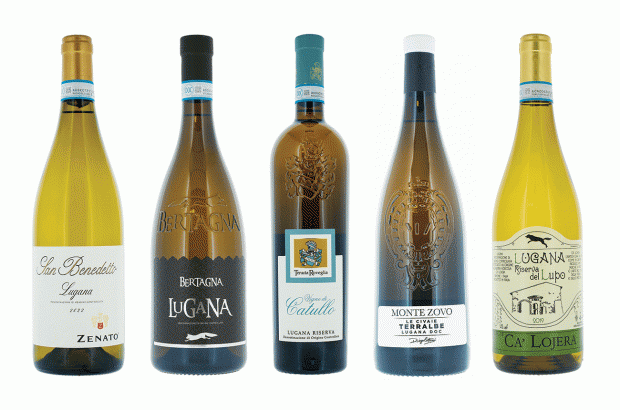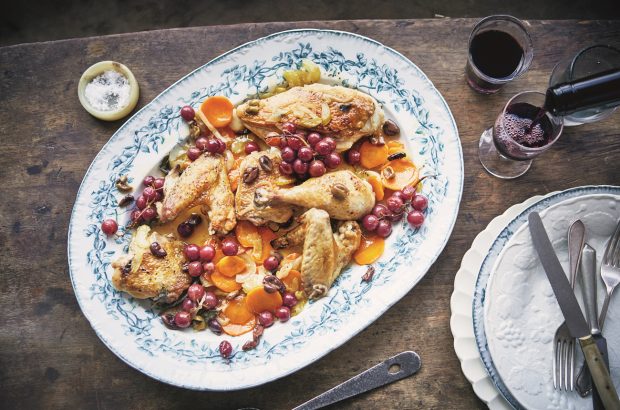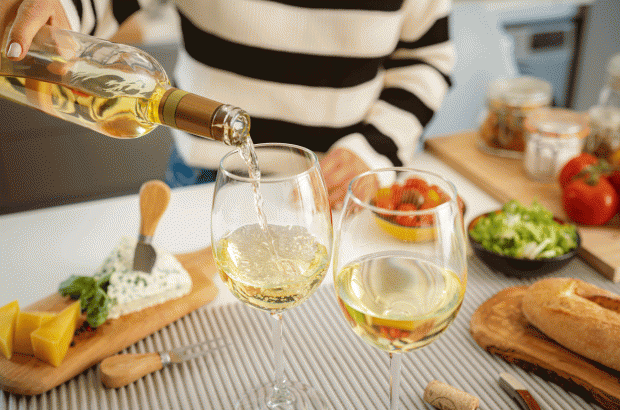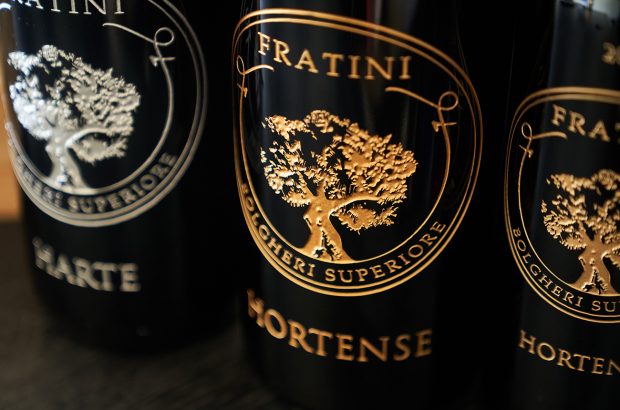Bordeaux may be a Merlot-Cabernet-centric region, but a smattering of other red varieties subsist alongside. Look at the figures: Merlot accounts for 66% of the region’s red plantings, Cabernet Sauvignon 22% and Cabernet Franc 9%, leaving a meagre 3% of ‘other red varieties’. For these read: Carmenère, Malbec and Petit Verdot. While not exactly household names – though still officially authorised and very much part of the region’s DNA – these three secondary varieties are belatedly stirring interest as growers rediscover their potential as a single variety or as a component in a blend.
{"content":"PHA+QWxsIHRocmVlIHZhcmlldGllcyB3ZXJlIHZlcnkgbXVjaCBpbiBldmlkZW5jZSBpbiAxOHRoLSBhbmQgMTl0aC1jZW50dXJ5IEJvcmRlYXV4LiBDYXJtZW7DqHJlLCBhIG5hdHVyYWwgY3Jvc3MgYmV0d2VlbiBDYWJlcm5ldCBGcmFuYyBhbmQgR3JvcyBDYWJlcm5ldCwgb3JpZ2luYXRlZCBpbiB0aGUgR2lyb25kZSBhbmQgd2FzIHdpZGVseSBwbGFudGVkIGluIHRoZSBNw6lkb2MuIE1hbGJlYyAob3IgQ8O0dCksIG9yaWdpbmFsbHkgZnJvbSBDYWhvcnMsIHdhcyBwbGFudGVkIGluIEJvcmRlYXV4IGZyb20gdGhlIG1pZC0xODxzdXA+dGg8L3N1cD4gY2VudHVyeSBvbi4gSGlzdG9yeSByZWxhdGVzIGl0IHdhcyBjdWx0aXZhdGVkIGF0IENow6J0ZWF1IGRlIFByZXNzYWMgaW4gU3QtRW1pbGlvbiBhcm91bmQgMTc0NywgaGVuY2UgdGhlIGxvY2FsIG5hbWUgZm9yIE1hbGJlYywgUHJlc3NhYyBvciBOb2lyIGRlIFByZXNzYWMsIHdoaWNoIHN0aWxsIGhvbGRzIHRvZGF5LjwvcD4KPHA+PGRpdiBjbGFzcz0iYWQtY29udGFpbmVyIGFkLWNvbnRhaW5lci0tbW9iaWxlIj48ZGl2IGlkPSJwb3N0LWlubGluZS0xIiBjbGFzcz0iaXBjLWFkdmVydCI+PC9kaXY+PC9kaXY+PC9wPgo8YmxvY2txdW90ZT4KPHA+4oCYUGV0aXQgVmVyZG90IGlzIGEgY29tcGxlbWVudGFyeSBncmFwZSB2YXJpZXR5IHRoYXQgY2FuIHJlZHVjZSBlbGVnYW5jZSBpZiBub3QgaGFuZGxlZCBjYXJlZnVsbHnigJkgJiM4MjExOyBQaGlsaXBwZSBCYXNjYXVsZXMsIENow6J0ZWF1IE1hcmdhdXg8L3A+CjwvYmxvY2txdW90ZT4KPHA+UGV0aXQgVmVyZG90IHdhcyBpbml0aWFsbHkgdGhvdWdodCB0byBoYXZlIGNvbWUgZnJvbSB0aGUgR2lyb25kZSwgYnV0IGFtcGVsb2dyYXBoaWMgKHRoZSBmaWVsZCBvZiBib3RhbnkgY29uY2VybmVkIHdpdGggdGhlIGlkZW50aWZpY2F0aW9uIGFuZCBjbGFzc2lmaWNhdGlvbiBvZiB2aW5lcykgYW5kIGdlbmV0aWMgcmVzZWFyY2ggc3VnZ2VzdHMgcHJvdmVuYW5jZSBpbiB0aGUgUHlyw6luw6llcy1BdGxhbnRpcXVlcy4gSG93IGl0IHNldHRsZWQgaW4gdGhlIEdpcm9uZGUgaXMgbGVzcyBjbGVhciwgYnV0IGl0cyAxOXRoLWNlbnR1cnkgcmVwdXRhdGlvbiB3YXMgZGVmaW5pdGl2ZWx5IHRpZWQgdG8gQm9yZGVhdXggYW5kIGluIHBhcnRpY3VsYXIgdGhlIE3DqWRvYywgd2hpY2ggdG9kYXkgc3RpbGwgbWFpbnRhaW5zIG92ZXIgaGFsZiB0aGUgcmVnaW9u4oCZcyBwbGFudGluZ3MuPC9wPgo8cD5UaGUgdG90YWwgZXh0ZW50IG9mIHRoZSBzdXJmYWNlIGFyZWEgZm9yIGFsbCB0aHJlZSBieSB0aGUgbWlkLTE5dGggY2VudHVyeSBpcyB1bnJlY29yZGVkLCBidXQgaXQgd2FzIGNsZWFybHkgc2lnbmlmaWNhbnQ6IENhcm1lbsOocmUgYW5kIFBldGl0IFZlcmRvdCB1c2VkIGluIE3DqWRvYyBibGVuZHMsIGFuZCBNYWxiZWMgZ3JhZHVhbGx5IGRvbWluYXRpbmcgb24gdGhlIFJpZ2h0IEJhbmsuIFVudGlsIHRoZSBhZHZlbnQgb2YgcGh5bGxveGVyYSAoaW4gdGhlIGxhdGUgMTg2MHMgYW5kIHRoZSAxODcwcyksIGZvciBpbnN0YW5jZSwgTWFsYmVjIHJlcHJlc2VudGVkIDgwJSBvZiBwbGFudGluZ3MgaW4gdGhlIEPDtHRlcyBkZSBCb3VyZy48L3A+CjxwPjxkaXYgY2xhc3M9ImFkLWNvbnRhaW5lciBhZC1jb250YWluZXItLW1vYmlsZSI+PGRpdiBpZD0icG9zdC1pbmxpbmUtMiIgY2xhc3M9ImlwYy1hZHZlcnQiPjwvZGl2PjwvZGl2PjwvcD4KPGgzPlJlbmV3ZWQgaW50ZXJlc3Q8L2gzPgo8cD5JdCB3YXMgcGh5bGxveGVyYSB0aGF0IHJlZHVjZWQgdGhlIHByZXNlbmNlIG9mIGFsbCB0aHJlZSBvZiB0aGVzZSBzZWNvbmRhcnkgdmFyaWV0aWVzIGluIEJvcmRlYXV4LCBhbmQgdGhlIDE5NTYgZnJvc3QgZnVydGhlciBkZWNpbWF0ZWQgTWFsYmVjLiBWaW5lcyB3ZXJlIGRlc3Ryb3llZCBhbmQgZ3Jvd2VycyB3ZXJlIGF2ZXJzZSB0byByZXBsYW50aW5nIHRoZW0gZHVlIHRvIHRoZSBkaWZmaWN1bHRpZXMgdGhleSBwb3NlIGluIGN1bHRpdmF0aW9uLiBDYXJtZW7DqHJlIGlzIGxvdy1mcnVpdGluZyBhbmQgc3VzY2VwdGlibGUgdG8gY291bHVyZSAocG9vciBmcnVpdCBzZXQpIHNvIGhhcyBpcnJlZ3VsYXIgeWllbGRzLiBQZXRpdCBWZXJkb3QgaXMgbmF0dXJhbGx5IHByb2R1Y3RpdmUgYW5kIGhhcyBzaG9vdHMgYW5kIHN0ZW1zIHRoYXQgYnJlYWsgZWFzaWx5LCBzbyBpdCBuZWVkcyBwbGVudHkgb2Ygd29yayBhbmQgYXR0ZW50aW9uIGluIHRoZSB2aW5leWFyZDsgbGlrZSBDYXJtZW7DqHJlLCBpdCBpcyBhbHNvIGxhdGUtcmlwZW5pbmcuIE1hbGJlYyBpbml0aWFsbHkgcHJvdmVkIGRpZmZpY3VsdCB3aGVuIGdyYWZ0ZWQgb24gdG8gQW1lcmljYW4gcm9vdHN0b2NrLCBpcyBvdmVyLXByb2R1Y3RpdmUgYW5kIHNlbnNpdGl2ZSB0byBjb3VsdXJlLjwvcD4KPHA+VGhlIG5hZGlyIG9mIHRoaXMgd2FzIHNlZW4gaW4gdGhlIENJVkIgKENvbnNlaWwgSW50ZXJwcm9mZXNzaW9ubmVsIGR1IFZpbiBkZSBCb3JkZWF1eCkgZmlndXJlcyBmb3IgMjAwMCwgd2hpY2ggc2hvdyB0b3RhbCBwbGFudGluZ3MgaW4gdGhlIHJlZ2lvbiBvZiBqdXN0IDRoYSBDYXJtZW7DqHJlLCAzNzVoYSBQZXRpdCBWZXJkb3QgYW5kIDk2NmhhIE1hbGJlYy4gVGhlc2UgaGF2ZSBzaW5jZSBpbmNyZWFzZWQgcmVzcGVjdGl2ZWx5IHRvIDU2aGEsIDEsMDkzaGEgYW5kIDEsNzkxaGEgaW4gMjAxOCwgc28gY2xlYXJseSBncm93ZXJzIGhhdmUgZm91bmQgbW90aXZhdGlvbiB0byBwbGFudCBhZ2Fpbi4gR2xvYmFsIHdhcm1pbmcgaGFzIGhlbHBlZCBjb25zaWRlcmFibHkgaW4gdGhlaXIgbmV3Zm91bmQgcG9wdWxhcml0eSwgYXMgaGF2ZSBpbXByb3ZlZCB2aXRpY3VsdHVyYWwgdGVjaG5pcXVlcyBhbmQgbmV3IGNsb25lcyBhbmQgcm9vdHN0b2Nrcy48L3A+CjxwPkNhcm1lbsOocmUgaXMgc3RpbGwgdGhlIG1vc3QgbWFyZ2luYWwgb2YgdGhlIHRocmVlLiBJdHMgbG93IHlpZWxkcyBhbmQgZGlmZmljdWx0eSBpbiByaXBlbmluZyBmdWxseSBtYWtlIGl0IHRoZSBsZWFzdCBhdHRyYWN0aXZlLiDigJhJdCBoYXMgdGhlIHNhbWUgZ3Jvd2luZyBjeWNsZSBhcyBDYWJlcm5ldCBTYXV2aWdub24gdXAgdG8gdsOpcmFpc29uICh0aGUgcGVyaW9kIHdoZW4gYmVycmllcyBiZWdpbiB0byByaXBlbiksIGJ1dCBmcm9tIHRoZW4gb24gdGhlIG1hdHVyaXR5IGlzIHByb3RyYWN0ZWQgc28gaXQgc3RheXMgdmVnZXRhbCBtdWNoIGxvbmdlcizigJkgZXhwbGFpbnMgQ2hyaXN0b3BoZSBDYXBkZXZpbGxlLCBnZW5lcmFsIG1hbmFnZXIgb2YgTWFyZ2F1eCBzZWNvbmQgZ3Jvd3RoIENow6J0ZWF1IEJyYW5lLUNhbnRlbmFjLiBUaGUgZXN0YXRlIHJlcGxhbnRlZCB0aGUgdmFyaWV0eSBpbiAyMDA3IGJ1dCBpdCBoYXMgb25seSBiZWVuIHVzZWQgaW4gdGhlIGdyYW5kIHZpbiBpbiAyMDExLCAyMDE1IGFuZCAyMDE2LCBhbmQgdGhlbiB1cCB0byBhIG1heGltdW0gb2YgMSUgb2YgdGhlIGJsZW5kLjwvcD4KPGRpdiBjbGFzcz0iYWQtY29udGFpbmVyIGFkLWNvbnRhaW5lci0tbW9iaWxlIj48ZGl2IGlkPSJwb3N0LWlubGluZS0zIiBjbGFzcz0iaXBjLWFkdmVydCI+PC9kaXY+PC9kaXY+CjxibG9ja3F1b3RlPgo8cD7igJhDYXJtZW7DqHJl4oCZcyBzaWxreSB0YW5uaW5zIGFkZCBzb21ldGhpbmcgdG8gdGhlIHRleHR1cmUgb2YgdGhlIHBhbGF0ZeKAmSAmIzgyMTE7IENocmlzdG9waGUgQ2FwZGV2aWxsZTwvcD4KPC9ibG9ja3F1b3RlPgo8cD5BcyBhIHNpbmdsZSB2YXJpZXR5IGl0IGxhY2tzIGRpc3RpbmN0aW9uLCBidXQgZ3Jvd2VycyB3aG8gY3VsdGl2YXRlIENhcm1lbsOocmUgYWdyZWUgdGhhdCBpZiBmdWxseSByaXBlIGl0IGNhbiBhZGQgYSBsaXR0bGUgcGVwIHRvIGEgYmxlbmQuIOKAmEl0IG9mZmVycyBhbiBleG90aWMsIHNwaWN5IG5vdGUs4oCZIHNheXMgSmVhbi1FbW1hbnVlbCBEYW5qb3ksIG1hbmFnZXIgb2YgUGF1aWxsYWMgZmlmdGggZ3Jvd3RoIENow6J0ZWF1IENsZXJjIE1pbG9uLiBUaGUgZXN0YXRlIGhhcyBhbiBvbGQgcGFyY2VsIHRoYXQgd2FzIHBsYW50ZWQgaW4gMTk0Ny4gQmFjayBhdCBDaMOidGVhdSBCcmFuZS1DYW50ZW5hYywgQ2FwZGV2aWxsZSBhcHByZWNpYXRlcyDigJh0aGUgc2lsa3kgdGFubmlucywgd2hpY2ggYWRkIHNvbWV0aGluZyB0byB0aGUgdGV4dHVyZSBvZiB0aGUgcGFsYXRl4oCZLiBQbGFudGluZ3Mgb2YgQ2FybWVuw6hyZSByZW1haW4gZGlzY3JlZXQgYW5kIG1haW5seSBMZWZ0IEJhbmstb3JpZW50ZWQgYnV0IHRoZXJlIGFyZSBleGNlcHRpb25zLiBDaMOidGVhdXggZGUgRm9uYmVsIGFuZCBkZSBQcmVzc2FjIGluIFN0LUVtaWxpb24gY3VsdGl2YXRlIGEgbGl0dGxlLCBhcyBkb2VzIENow6J0ZWF1IGRlIEJvdWlsbGVyb3QgaW4gdGhlIEVudHJlLURldXgtTWVycy48L3A+CjxkaXYgY2xhc3M9ImFkLWNvbnRhaW5lciBhZC1jb250YWluZXItLW1vYmlsZSI+PGRpdiBpZD0icG9zdC1pbmxpbmUtNCIgY2xhc3M9ImlwYy1hZHZlcnQiPjwvZGl2PjwvZGl2Pgo8aDM+UG9zaXRpdmUgaW5mbHVlbmNlczwvaDM+CjxwPlRoZSBvdGhlciBNw6lkb2MtbGVhbmluZyB2YXJpZXR5IGlzIFBldGl0IFZlcmRvdC4gSXRzIGF0dHJpYnV0ZXMgaW5jbHVkZSBjb2xvdXIsIGFjaWRpdHksIHN1Z2FyIHBvdGVudGlhbCBhbmQgdGFubmluLiBJdCBpcyBhbHNvIHJlc2lzdGFudCB0byBkb3dueSBtaWxkZXcsIGEgcG9zaXRpdmUgZmFjdG9yIGluIDIwMTguIE9uIHRoZSBuZWdhdGl2ZSBzaWRlLCBpdCBpcyBuYXR1cmFsbHkgaGlnaC15aWVsZGluZywgYXdrd2FyZCB0byBjdWx0aXZhdGUsIGxhdGUtcmlwZW5pbmcgYW5kIHNlbnNpdGl2ZSB0byBwb3dkZXJ5IG1pbGRldyBhbmQgcm90LiBJbiB0aGUgcGFzdCB0aGlzIHdvdWxkIGhhdmUgYmVlbiBhIHR1cm4tb2ZmIGZvciBncm93ZXJzLCBidXQgaW1wcm92ZWQgdml0aWN1bHR1cmFsIHByYWN0aWNlcyBhbmQgZ2xvYmFsIHdhcm1pbmcgbm93IG1ha2UgdGhlIGRpZmZpY3VsdGllcyBzdXJtb3VudGFibGUuPC9wPgo8cD5Mb3cgeWllbGRzIGFyZSBjb21wdWxzb3J5LCB3aXRoIHByb2R1Y2VycyB0b2RheSBhd2FyZSB0aGF0IDQwaGwvaGEgaXMgdGhlIGNlaWxpbmcuIOKAmFRoZSBrZXkgdG8gcXVhbGl0eSBpcyB0aGUgeWllbGQs4oCZIHNheXMgU2FicmluYSBQZXJuZXQsIHRlY2huaWNhbCBkaXJlY3RvciBhdCBNYXJnYXV4IHRoaXJkIGdyb3d0aCBDaMOidGVhdSBQYWxtZXIuIEVhY2ggeWVhciB0aGUgUGV0aXQgVmVyZG90IGlzIHJlZHVjZWQgZG93biB0byAyNS0zNWhsL2hhIHZpYSBhbiBleHRlbnNpdmUgZ3JlZW4gaGFydmVzdCwgYSBwcm9jZWR1cmUgaW50cm9kdWNlZCBpbiB0aGUgZWFybHkgcGFydCBvZiB0aGUgbmV3IG1pbGxlbm5pdW0uPC9wPgo8ZGl2IGNsYXNzPSJhZC1jb250YWluZXIgYWQtY29udGFpbmVyLS1tb2JpbGUiPjxkaXYgaWQ9InBvc3QtaW5saW5lLTUiIGNsYXNzPSJpcGMtYWR2ZXJ0Ij48L2Rpdj48L2Rpdj4KPHA+T3RoZXIgZmFjdG9ycyB0aGF0IGhhdmUgYXNzaXN0ZWQgd2l0aCBxdWFsaXR5IGFyZSB0aGUgdXNlIG9mIGxlc3Mgdmlnb3JvdXMgcm9vdHN0b2NrcywgcGxhbnRpbmcgb24gZWFybGllci1yaXBlbmluZyBzaXRlcyB3aXRoIHN1ZmZpY2llbnQgbW9pc3R1cmUgdG8gYXZvaWQgc3RyZXNzLCB0aGUgdXNlIG9mIGJldHRlciB2aW5lIG1hdGVyaWFsIGFuZCwgb2YgY291cnNlLCBjbGltYXRlLiBUaGUgbmV3IG1pbGxlbm5pdW0gaGFzIGdlbmVyYWxseSBzZWVuIHdhcm0gdG8gaG90IHN1bW1lcnMgYW5kIGNsZW1lbnQgd2VhdGhlciBkdXJpbmcgdGhlIGhhcnZlc3RpbmcgcGVyaW9kLiDigJhUaGUgdmVnZXRhbCBlbGVtZW50IGluIFBldGl0IFZlcmRvdCBpcyBubyBsb25nZXIgYSBwcm9ibGVtLOKAmSBzYXlzIFRoaWVycnkgQm9zIG9mIENow6J0ZWF1IGRlIEJvdWlsbGVyb3QuPC9wPgo8cD5Gb3IgbW9zdCBwcm9kdWNlcnMgUGV0aXQgVmVyZG90IGlzIGFnYWluIHNlZW4gYXMgYSBibGVuZGluZyBjb21wb25lbnQuIEl0IGNhbiBlbmhhbmNlIGNvbG91ciwgcG93ZXIsIGRlbnNpdHkgb2Ygc3RydWN0dXJlIGFuZCBmcmVzaG5lc3MsIGJ1dCBpcyBjb25zaWRlcmVkIGEgbGl0dGxlIHRvbyBydXN0aWMgdG8gdXNlIGluIGxhcmdlIGRvc2VzLiDigJhJdOKAmXMgYSBjb21wbGVtZW50YXJ5IGdyYXBlIHZhcmlldHkgdGhhdCBjYW4gcmVkdWNlIGVsZWdhbmNlIGlmIG5vdCBoYW5kbGVkIGNhcmVmdWxseSzigJkgY29uZmlybXMgUGhpbGlwcGUgQmFzY2F1bGVzLCBtYW5hZ2luZyBkaXJlY3RvciBvZiBDaMOidGVhdSBNYXJnYXV4LjwvcD4KPHA+Q29udHJhZGljdGluZyB0aGlzIHJ1bGUsIFBhdHJpY2UgZGUgQm9ydG9saSBvZiBDaMOidGVhdSBNb3V0dGUgQmxhbmMgaW4gTWFjYXUsIE3DqWRvYywgaGFzIGJlZW4gbWFraW5nIHRoZSAxMDAlIFBldGl0IFZlcmRvdCBNb2lzaW4gc2luY2UgMTk5NC4gSXQgaXMgaW5kZWVkIG11c2N1bGFyIGJ1dCBhZ2VzIHdlbGwuIEhlIGhhcyBiZWVuIGpvaW5lZCBieSB0aGUgRHVib3VyZGlldSBmYW1pbHkgb2YgQ2jDonRlYXUgUmV5bm9uIGluIENhZGlsbGFjIEPDtHRlcyBkZSBCb3JkZWF1eC4gVGhpcyB5ZWFyIHRoZXkgcmVsZWFzZWQgYSBzaW5nbGUtdmFyaWV0eSB3aW5lLCBIb21tYWdlIMOgIERlbmlzIER1Ym91cmRpZXUgMjAxOCwgaW4gbWVtb3J5IG9mIHRoZSBsYXRlIG9lbm9sb2dpc3Qtd2luZW1ha2VyIGFuZCBoaXMgYXBwcmVjaWF0aW9uIG9mIHRoZSB2YXJpZXR5LjwvcD4KPHA+V2luZXMgZm9yIHRvZGF5IE1hbGJlYyB1c2VkIHRvIGJlIHBsYW50ZWQgdGhyb3VnaG91dCBCb3JkZWF1eCBidXQgZXZlbnR1YWxseSBmb3VuZCBpdHMgaG9tZSBvbiB0aGUgUmlnaHQgQmFuayBhbmQgaW4gdGhlIEVudHJlLURldXgtTWVycywgd2hlcmUgaXQgY2FuIHN0aWxsIGJlIGZvdW5kIHRvZGF5LiBXaXRoIGl0cyBsYXJnZSBiZXJyaWVzIGFuZCBidW5jaGVzLCBpdCB0b28gY2FuIGJlIGhpZ2gteWllbGRpbmcsIHNvIHZvbHVtZSBuZWVkcyB0byBiZSBjYXJlZnVsbHkgbWFuYWdlZC4gQXQgdGhlIHNhbWUgdGltZSwgaXQgaXMgYWxzbyBzdXNjZXB0aWJsZSB0byBjb3VsdXJlIGFuZCByb3QuIEJ1dCBhcyBCb3MgcG9pbnRzIG91dDog4oCYSXQgYWRhcHRzIHdlbGwgdG8gY2xheS1saW1lc3RvbmUgc29pbHMgYW5kIGNhbiBkZWxpdmVyIHRoZSBzb3J0IG9mIGZyZXNoLCBmcnVpdC1kcml2ZW4gd2luZXMgZGVtYW5kZWQgYnkgdG9kYXnigJlzIG1hcmtldC7igJk8L3A+Cjxocj4KPGRpdiBjbGFzcz0iYnJlYWtvdXQgcGFsZXR0ZS1hIHBhbmVsIHBhbmVsLWRlZmF1bHQiPjxkaXYgY2xhc3M9InBhbmVsLWJvZHkiPjxkaXYgY2xhc3M9J2JyZWFrb3V0LWNvbnRlbnQnPjwvcD4KPGgyIHN0eWxlPSJ0ZXh0LWFsaWduOiBjZW50ZXIiPkF0IGEgZ2xhbmNlOjxiciAvPgpDYXJtZW7DqHJlLCBNYWxiZWMgJmFtcDsgUGV0aXQgVmVyZG90PC9oMj4KPHA+PHN0cm9uZz5DYXJtZW7DqHJlPC9zdHJvbmc+PC9wPgo8cD5Ub3RhbCBwbGFudGluZ3M6IDU2aGE8YnIgLz4KRmxhdm91ciBwcm9maWxlOiBHcmVlbiBiZWFuIGlmIHVuZGVycmlwZTsgc3BpY2UsIGV4b3RpYyBub3RlczxiciAvPgpDaGFyYWN0ZXJpc3RpY3M6IExhdGUtcmlwZW5pbmcsIGlycmVndWxhciBwcm9kdWN0aW9uLCBsb3cgYWNpZGl0eSwgbGlnaHQgYnV0IGZpbmUgdGFubmluczxiciAvPgpBcHBsaWNhdGlvbjogQmxlbmRzPC9wPgo8cD48c3Ryb25nPk1hbGJlYzwvc3Ryb25nPjwvcD4KPHA+VG90YWwgcGxhbnRpbmdzOiAxLDc5MWhhPGJyIC8+CkZsYXZvdXIgcHJvZmlsZTogRnJ1aXR5IChkYXJrIGZydWl0KSwgZmxvcmFsPGJyIC8+CkNoYXJhY3RlcmlzdGljczogUHJvZHVjdGl2ZSwgZ29vZCBjb2xvdXIgYW5kIGFjaWRpdHksIHplc3R5IGZydWl0LCBzdHJ1Y3R1cmVkPGJyIC8+CkFwcGxpY2F0aW9uOiBTaW5nbGUgdmFyaWV0eSwgYmxlbmRzPC9wPgo8cD48c3Ryb25nPlBldGl0IFZlcmRvdDwvc3Ryb25nPjwvcD4KPHA+VG90YWwgcGxhbnRpbmdzOiAxLDA5M2hhPGJyIC8+CkZsYXZvdXIgcHJvZmlsZTogRGFyayBmcnVpdCwgZmxvcmFsICh2aW9sZXQpLCBzcGljZSwgcGVwcGVyPGJyIC8+CkNoYXJhY3RlcmlzdGljczogTGF0ZS1yaXBlbmluZywgcHJvZHVjdGl2ZSwgZGVlcCBjb2xvdXIsIHRhbm5pYyBwb3dlci9zdHJ1Y3R1cmUsIGdvb2QgYWNpZGl0eTxiciAvPgpBcHBsaWNhdGlvbjogQmxlbmRzLCBzaW5nbGUgdmFyaWV0eTwvcD4KPHA+CjwvZGl2PjxkaXYgY2xhc3M9J2JyZWFrb3V0LWJ1dHRvbnMnPjxkaXYgY2xhc3M9J3Jvdyc+PC9kaXY+PC9kaXY+PC9kaXY+PC9kaXY+Cjxocj4KPHA+VGhlIEPDtHRlcyBkZSBCb3VyZyBpcyBvbmNlIGFnYWluIGF0IHRoZSBmb3JlZnJvbnQgb2YgcHJvbW90aW5nIHRoZSB2YXJpZXR5LiBBdCB0aGUgYmVnaW5uaW5nIG9mIHRoZSBuZXcgbWlsbGVubml1bSBqdXN0IDUlIG9mIHRoZSBhcHBlbGxhdGlvbiB3YXMgcGxhbnRlZCB0byBNYWxiZWMsIGJ1dCBhIG51bWJlciBvZiBpbnRlcm5hbCBpbml0aWF0aXZlcyBoYXZlIGhlbHBlZCB0aGUgZmlndXJlIHJpc2UgdG8gMTAlIG9yIGFib3V0IDQwMGhhLiBUaGUgZ3JhcGUgdmFyaWV0eSBjYW4gYmUgZm91bmQgaW4gYmxlbmRzIG9yIGxhYmVsbGVkIGFzIGEgc2luZ2xlIHZhcmlldHk7IHRoZSBDw7R0ZXMgZGUgQm91cmcgYSByYXJlIHN1Yi1yZWdpb25hbCBvciBjb21tdW5hbCBhcHBlbGxhdGlvbiB3aGVyZSB0aGlzIGlzIHBlcm1pdHRlZC4gQSByZWdpb25hbCBqb2ludCB2ZW50dXJlIHdpdGggYSB2aW5lIG51cnNlcnkgd2lsbCBhbHNvIHNlZSB0d28gbmV3IHF1YWxpdGF0aXZlIGNsb25lcyBhdmFpbGFibGUgZnJvbSAyMDIxLjwvcD4KPHA+UGxhbnRpbmdzIG9mIE1hbGJlYyBpbiBCb3JkZWF1eCBhcmUgYSBtaXggb2Ygb2xkIHZpbmUgbWF0ZXJpYWwsIG1hc3NhbCBzZWxlY3Rpb24gKHByb3BhZ2F0aW5nIGN1dHRpbmdzIGZyb20gZXhpc3RpbmcgdmluZXMsIHdpdGggdGhlIGFpbSBvZiBwcmVzZXJ2aW5nIGNsb25hbCBkaXZlcnNpdHkgYW5kIHF1YWxpdHkpIGZyb20gdGhlIG9sZCB2aW5lcyBhbmQgdHdvIG9yIHRocmVlIGNvbW1lcmNpYWwgY2xvbmVzLiBRdWVzdGlvbmluZyB0aGUgcXVhbGl0YXRpdmUgbmF0dXJlIG9mIHRoZSBsYXR0ZXIsIERhdmlkIEJhcnJhdWx0IG9mIENow6J0ZWF1IFRpcmUgUMOpIGluIHRoZSBFbnRyZS1EZXV4LU1lcnMgc291cmNlZCBoaXMgbWFzc2FsIHNlbGVjdGlvbiBNYWxiZWMgZnJvbSBvbGQgdmluZXMgaW4gQ2Fob3JzIHdoZW4gaGUgcGxhbnRlZCB0aGUgdmFyaWV0eSBpbiAyMDAyLiBUaGUgY2xheS1saW1lc3RvbmUgc29pbHMsIHBsYW50aW5nIGRlbnNpdHkgb2YgNSwwMDAgdmluZXMgcGVyIGhlY3RhcmUgYW5kIHlpZWxkcyBvZiA0MC01MGhsL2hhIGhhdmUgcHJvZHVjZWQgYSBiZW5jaG1hcmsgZnJlc2gsIGZsb3JhbCBzdHlsZS48L3A+CjxkaXYgY2xhc3M9ImluamVjdGlvbiI+PC9kaXY+CjxwPjxhIGhyZWY9Imh0dHBzOi8vd3d3LmRlY2FudGVyLmNvbS93aW5lLW5ld3MvYm9yZGVhdXgtbmV3LXdpbmUtZ3JhcGVzLTQxOTczMC8iPldpdGggdGhlIElOQU8gKEluc3RpdHV0IE5hdGlvbmFsIGRlIGzigJlPcmlnaW5lIGV0IGRlIGxhIFF1YWxpdMOpKSBkZWxpYmVyYXRpbmcgb24gdGhlIHVzZSBvZiBzZXZlbiBvdGhlciBncmFwZSB2YXJpZXRpZXMgaW4gQm9yZGVhdXg8L2E+IChzb21lIGRpc3RpbmN0bHkgbm9uLUJvcmRlYXV4KSwgQmFycmF1bHQgaGFzIGFscmVhZHkganVtcGVkIHRoZSBndW4gYnkgcGxhbnRpbmcgdHdvIG9sZCBhbmQgZm9yZ290dGVuIEJvcmRlYXV4IHZhcmlldGllcywgQ2FzdGV0cyBhbmQgTWFuY2luLiBQZXBwZXJ5IGFuZCBmcmVzaCB3aXRoIHJlbGF0aXZlbHkgbG93IGFsY29ob2wsIHRoZXkgdG9vIGNvdWxkIG9mZmVyIGFub3RoZXIgcGVyc3BlY3RpdmUgZm9yIHRoZSByZWdpb24uPC9wPgo8cD5UaGUgTWVybG90LUNhYmVybmV0IGhlZ2Vtb255IHdpbGwgdGFrZSBzb21lIHNoaWZ0aW5nLCBidXQgZm9yIHNhdnZ5IEJvcmRlYXV4IHByb2R1Y2VycyBsb29raW5nIGZvciBhbiBhbHRlcm5hdGl2ZSBleHByZXNzaW9uLCBkZWx2aW5nIGludG8gdGhlIG9sZCBncmFwZSB2YXJpZXRpZXMgb2YgdGhlIHBhc3QgY291bGQgYmUgdGhlIHdheSB0byBnby48L3A+CjxwPgo="}
Lawther’s pick: Bordeaux with a different accent
{}
{"wineId":"33146","displayCase":"standard","paywall":true}
{"wineId":"11182","displayCase":"standard","paywall":true}
{"wineId":"39309","displayCase":"standard","paywall":true}
{"wineId":"39310","displayCase":"standard","paywall":true}
{"wineId":"10982","displayCase":"standard","paywall":true}
{"wineId":"39311","displayCase":"standard","paywall":true}
{"wineId":"39312","displayCase":"standard","paywall":true}
{"wineId":"39313","displayCase":"standard","paywall":true}
{}















